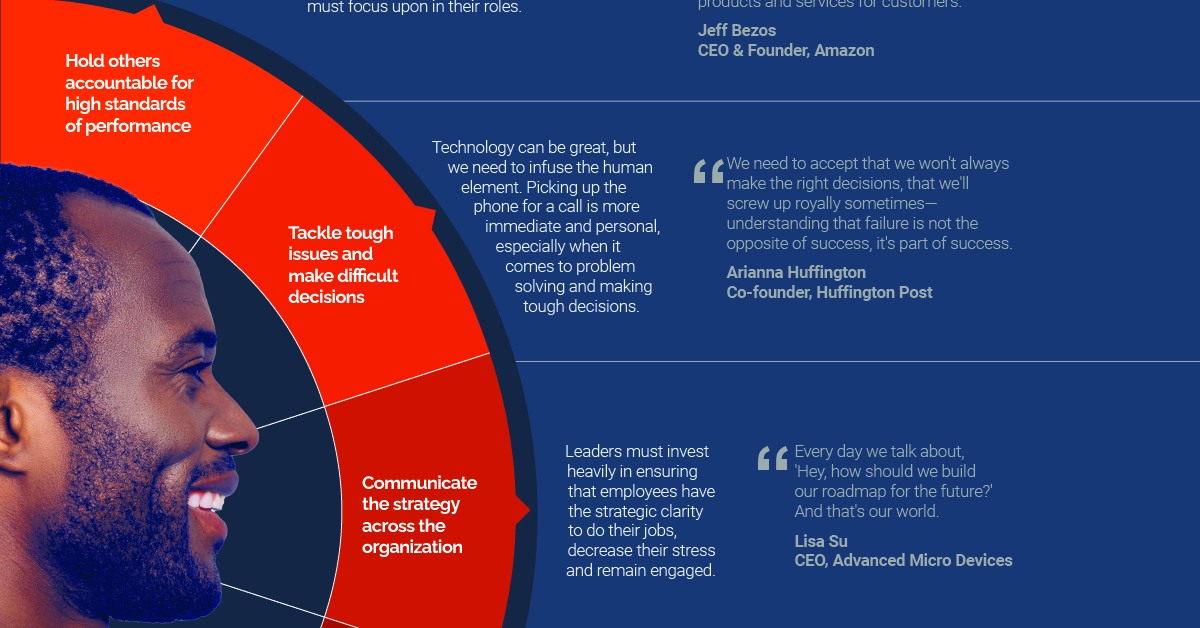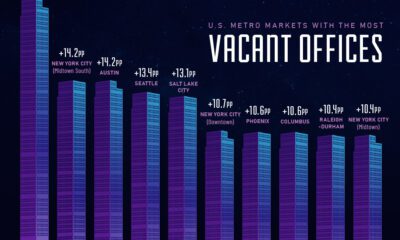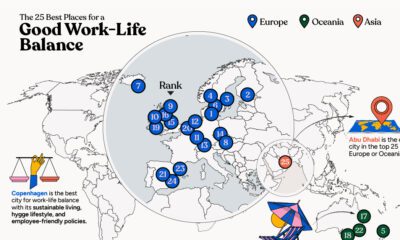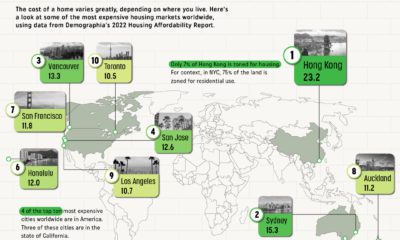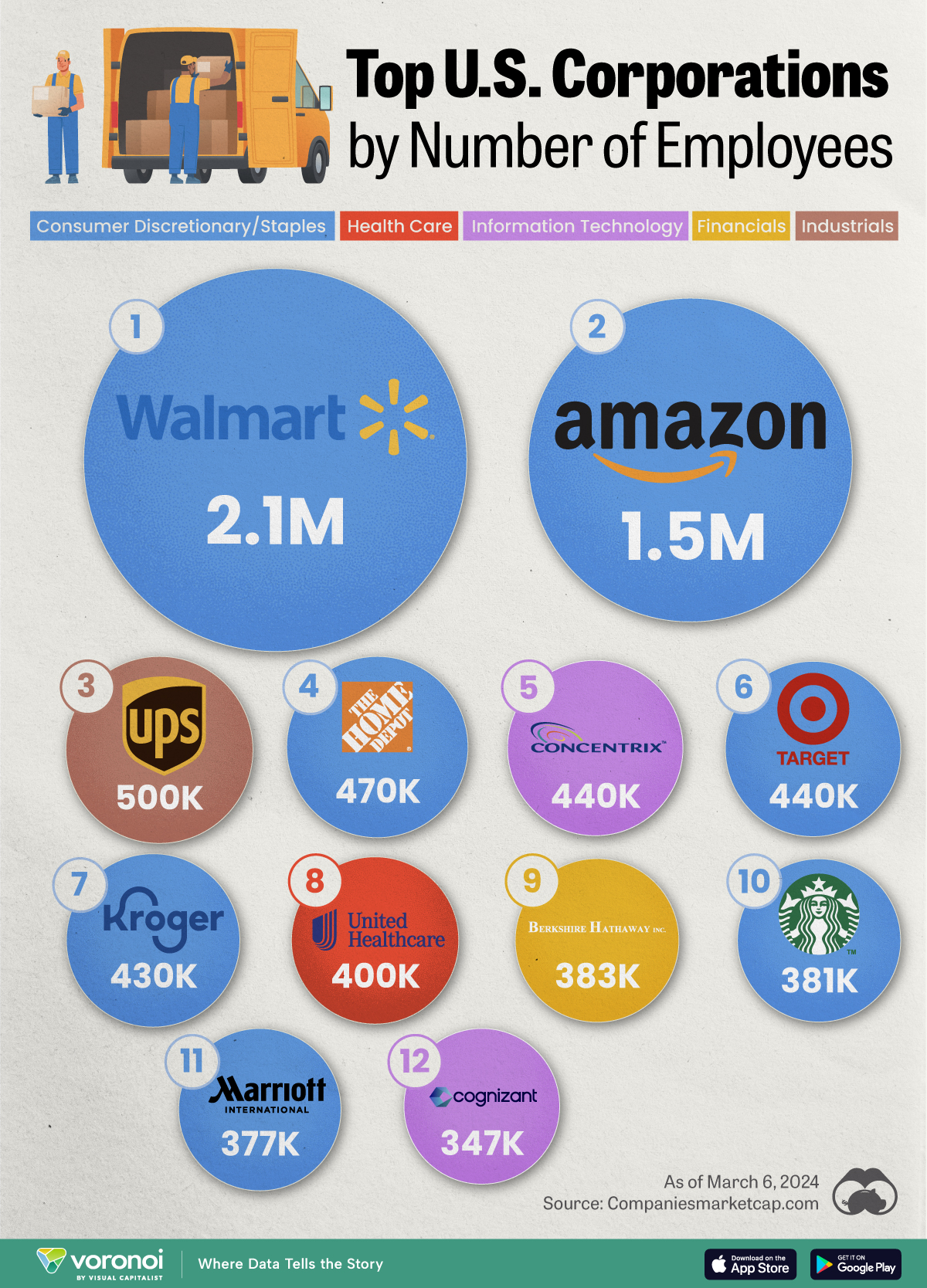Markets
Navigating Uncertainty: Leadership Accountability in Times of Crisis
In the face of adversity, leaders may struggle to manage their teams effectively.
Before the COVID-19 outbreak, over half of all professionals globally worked remotely at least 2.5 days a week. This has since increased dramatically, with 88% of organizations now insisting their employees work from home and implement social distancing.
Leaders must adapt to a more flexible workplace and create a culture of accountability so that their organization can successfully weather the COVID-19 storm.
Leadership Accountability in Uncertain Times
Today’s infographic, from bestselling author Vince Molinaro, reveals the five behaviors that leaders can adopt in order to provide thoughtful navigation through uncertainty.

>> Join Vince Molinaro’s Community of Accountable Leaders
The Impact of Leadership Accountability
As the workforce pivots to remote working arrangements, the benefits of flexible working policies are coming into sharper focus.
Research shows that these policies can lower overhead costs, reduce commuting times and increase employee satisfaction—in addition to attracting top talent. Moreover, the shift to working remotely could boost the U.S. economy by $4.5 trillion annually by 2030.
But achieving these benefits requires accountability from everyone in an organization, and in an increasingly virtual world, that can become difficult to manage.
Challenges Facing Leaders Today
Leaders are already subject to an array of challenges that they must overcome, such as:
- The pressure to differentiate: Leaders feel an unrelenting pressure to innovate and help their organizations stand out in a sea of ruthless competitors.
- Executing the strategy: Leaders must align the organization to ensure employees are clear about what needs to get done to execute priorities seamlessly.
- Leading transformational change: With so many moving parts, constant change across several aspects of a business can be difficult for leaders to manage.
- Creating enduring value: Customers, boards, and shareholders have high expectations for leaders in exchange for their loyalty.
- Building future talent: Leaders must build and nurture the next generation of leaders in addition to managing the day-to-day.
These mounting pressures can have a detrimental impact on a business leader’s performance, so it is crucial that they get the support they need now, more than ever.
The Characteristics of Accountable Leaders
Truly accountable leadership is the only way an organization can weather uncertainty in a world that has been upended. Research reveals that among the strongest performing companies, accountable leaders consistently demonstrate five behaviors that set them apart from others.
- Hold others accountable for high standards of performance
Good leaders make mutual expectations clear by consistently reinforcing what is important, and what employees should prioritize in their roles. - Tackle tough issues and make difficult decisions
Technology is hugely beneficial, but it should never replace the human element. Picking up the phone or having a Skype call is more immediate and personal, especially when it comes to problem solving and making tough decisions. - Communicate the strategy across the organization
Leaders must ensure that employees have complete clarity in terms of the company’s vision to do their jobs effectively. Creating a set of well-defined goals can help people stay engaged and decrease their stress levels. - Express optimism about the company and its future
Many employees can feel isolated and disconnected in the virtual world, so leaders must provide support, positive energy, and a sense of hope for the future. - Display clarity about external trends in the business environment
Finally, it is critical to help employees make sense of the current situation right now. Leaders must provide honest and transparent communication in a way that manages fear, stress, and anxiety. This encourages employees’s determination to help the organization succeed.
Leading The Future
As we embrace the unknown, it is clear that leadership accountability will become more important than ever.
In fact, it has become a crucial element for future-proofing organizations in times of crisis or drastic change. Perhaps more importantly, it is necessary for encouraging teams to emerge more connected and resilient than ever before.
Markets
Ranked: The Largest U.S. Corporations by Number of Employees
We visualized the top U.S. companies by employees, revealing the massive scale of retailers like Walmart, Target, and Home Depot.
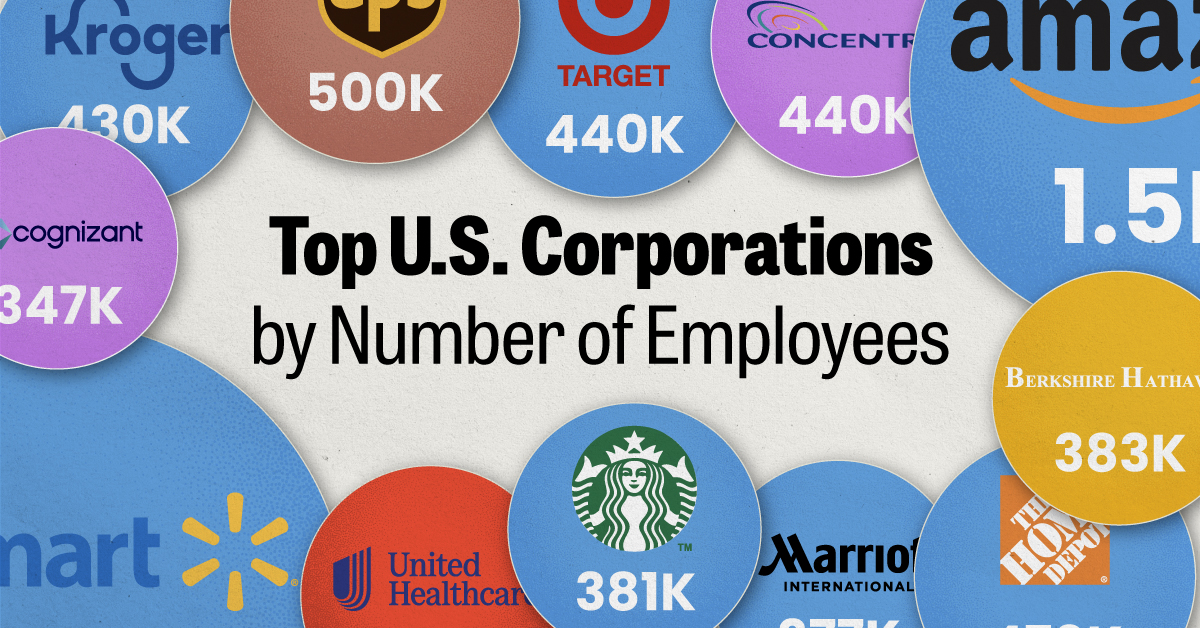
The Largest U.S. Corporations by Number of Employees
This was originally posted on our Voronoi app. Download the app for free on Apple or Android and discover incredible data-driven charts from a variety of trusted sources.
Revenue and profit are common measures for measuring the size of a business, but what about employee headcount?
To see how big companies have become from a human perspective, we’ve visualized the top U.S. companies by employees. These figures come from companiesmarketcap.com, and were accessed in March 2024. Note that this ranking includes publicly-traded companies only.
Data and Highlights
The data we used to create this list of largest U.S. corporations by number of employees can be found in the table below.
| Company | Sector | Number of Employees |
|---|---|---|
| Walmart | Consumer Staples | 2,100,000 |
| Amazon | Consumer Discretionary | 1,500,000 |
| UPS | Industrials | 500,000 |
| Home Depot | Consumer Discretionary | 470,000 |
| Concentrix | Information Technology | 440,000 |
| Target | Consumer Staples | 440,000 |
| Kroger | Consumer Staples | 430,000 |
| UnitedHealth | Health Care | 400,000 |
| Berkshire Hathaway | Financials | 383,000 |
| Starbucks | Consumer Discretionary | 381,000 |
| Marriott International | Consumer Discretionary | 377,000 |
| Cognizant | Information Technology | 346,600 |
Retail and Logistics Top the List
Companies like Walmart, Target, and Kroger have a massive headcount due to having many locations spread across the country, which require everything from cashiers to IT professionals.
Moving goods around the world is also highly labor intensive, explaining why UPS has half a million employees globally.
Below the Radar?
Two companies that rank among the largest U.S. corporations by employees which may be less familiar to the public include Concentrix and Cognizant. Both of these companies are B2B brands, meaning they primarily work with other companies rather than consumers. This contrasts with brands like Amazon or Home Depot, which are much more visible among average consumers.
A Note on Berkshire Hathaway
Warren Buffett’s company doesn’t directly employ 383,000 people. This headcount actually includes the employees of the firm’s many subsidiaries, such as GEICO (insurance), Dairy Queen (retail), and Duracell (batteries).
If you’re curious to see how Buffett’s empire has grown over the years, check out this animated graphic that visualizes the growth of Berkshire Hathaway’s portfolio from 1994 to 2022.
-

 Business2 weeks ago
Business2 weeks agoAmerica’s Top Companies by Revenue (1994 vs. 2023)
-

 Environment2 weeks ago
Environment2 weeks agoRanked: Top Countries by Total Forest Loss Since 2001
-

 Markets2 weeks ago
Markets2 weeks agoVisualizing America’s Shortage of Affordable Homes
-

 Maps2 weeks ago
Maps2 weeks agoMapped: Average Wages Across Europe
-

 Mining2 weeks ago
Mining2 weeks agoCharted: The Value Gap Between the Gold Price and Gold Miners
-

 Demographics2 weeks ago
Demographics2 weeks agoVisualizing the Size of the Global Senior Population
-

 Misc2 weeks ago
Misc2 weeks agoTesla Is Once Again the World’s Best-Selling EV Company
-

 Technology2 weeks ago
Technology2 weeks agoRanked: The Most Popular Smartphone Brands in the U.S.

